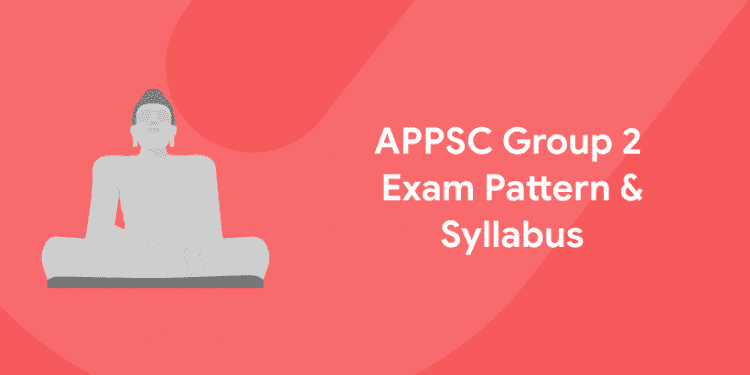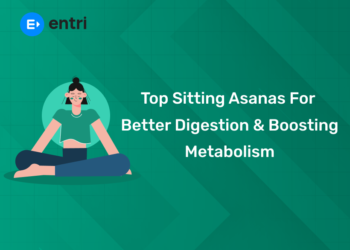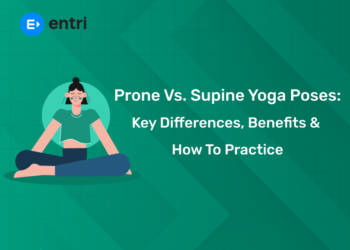APPSC ( Andhra Pradesh Public Service Commission) released notification for recruitment to the post of Group 2 Services for a total of 110 Carry Forward and 336 Fresh vacancies. Candidates meeting the eligibility criteria can apply for these posts. We bring you here information to all aspirants on the APPSC Group 2 Exam Pattern and Syllabus.
Download Entri today to ace your APPSC exams.
APPSC Group 2 Exam Pattern and Syllabus: Information
- The APPSC Group 2 exam is conducted in 3 stages- Screening Test, Mains Exam and practical test.
- The screening test comprises of objective type test carrying 150 marks.
- The mains exam of APPSC Group 2 consists of 3 papers focusing on General Studies, History and Economy.
- APPSC Group 2 exam pattern 2019 for practical type carries 50 marks.
EXAM PATTERN FOR GROUP 2 SERVICES
SCREENING TEST
WRITTEN EXAMINATION (OBJECTIVE TYPE) BACHELOR’S DEGREE STANDARD
| Subject | No. of Questions | Duration( Mins) | Maximum Marks | |
| Section-A
|
GENERAL STUDIES & MENTAL ABILITY | 150 |
150 | 150 |
| Section –B | SOCIAL AND CULTURAL HISTORY OF ANDHRA PRADESH & INDIAN CONSTITUTION | |||
|
Section-C |
PLANNING AND ECONOMY | |||
- Note: NEGATIVE MARKS: For each wrong answer will be penalized with 1/3rd of the marks prescribed for the question.
MAIN EXAMINATION
WRITTEN EXAMINATION (OBJECTIVE TYPE) BACHELOR’S DEGREE STANDARD
| Subject | No. of
Questions
|
Duration
(Minutes)
|
Maximum
Marks
|
|
| PAPER – I
|
GENERAL STUDIES & MENTAL ABILITY | 150 | 150 | 150 |
| PAPER – II
|
I. SOCIAL HISTORY OF ANDHRA PRADESH i.e., THE
HISTORY OF VARIOUS SOCIAL AND CULTURAL MOVEMENTS IN ANDHRA PRADESH II. GENERAL OVERVIEW |
150 | 150 | 150 |
| PAPER – III
|
PLANNING IN INDIA AND INDIAN ECONOMY
CONTEMPORARY PROBLEMS AND DEVELOPMENTS IN RURAL SOCIETY WITH SPECIAL REFERENCE TO ANDHRA PRADESH |
150 | 150 | 150 |
| Total | 450 | |||
Note:
- For each wrong answer will be penalized with 1/3rd of the marks prescribed for the question.
- Computer Proficiency Test (Qualifying Test) for eligible candidates in the ratio of 1:2 with reference to total number of vacancies notified.
SYLLABUS FOR GROUP 2 SERVICES
PRELIMINARY EXAMINATION
Section – A
GENERAL STUDIES AND MENTAL ABILITY
- Events of national and international importance.
- Current affairs- international, national and regional.
- General Science and its applications to the day to day life Contemporary developments in Science & Technology and Information Technology
- Social- economic and political history of modern India with emphases on Indian
- national movement.
- Indian polity and governance: constitutional issues, public policy, reforms and egovernance
- initiatives.
- Geography of India with focus on Andhra Pradesh.
- Disaster management: vulnerability profile, prevention and mitigation strategies,
- Application of Remote Sensing and GIS in the assessment of Disaster
- Sustainable Development and Environmental Protection
- Logical reasoning, analytical ability and logical interpretation.
- Data Analysis: Tabulation of data Visual representation of data Basic data analysis
- (Summary Statistics such as mean, median, mode and variance) and
- Interpretation.
- Bifurcation of Andhra Pradesh and its Administrative, Economic, Social,
- Cultural, Political and legal implications/problems.
Section – B
- SOCIAL AND CULTURAL HISTORY OF ANDHRA PRADESH
- Social and Cultural History of Andhra Pradesh: Geographical Features of Andhra
- – Its Impact on History and Culture – Pre-historic Cultures – The Satavahanas, The
- Ikshvakus – Socio-Economic and Religious Conditions – Literature, Art and
- Architecture – The Vishnukundins, The Eastern Chalukyas of Vengi, Telugu Cholas–
- Society, Religion, Telugu Language, Literature, Art and Architecture.
- Various Major and Minor dynasties that ruled Andhradesa between 11th and 16th
- centuries A.D. Socio- Cultural and Religious conditions in Andhradesa between
- 11th to 16th centuries A.D, Social Structure, Caste System, Status of Women.
- Growth of Telugu Language, Literature, Art, Architecture and Painting.
- Advent of Europeans- Trade centers- Andhra under the Company– 1857 Revolt
- and its impact on Andhra- Establishment of British Rule- Socio-Cultural
- awakening, Justice Party/Self Respect Movements- Growth of Nationalist
- Movement in Andhra between 1885 to 1947– Role of Socialists– Communists–
- Anti- Zamindari and Kisan Movements. Growth of Nationalist Poetry,
- Revolutionary Literature, Nataka Samasthalu and Women Participation.
- Origin and growth of Andhra Movement- Role of Andhra Mahasabhas- Prominent
- Leaders- Events leading to the formation of Andhra State 1953. Role of Press and
- News Papers in the Andhra Movement. Role of Library Movement and Folk &
- Tribal Culture
- Events leading to the Formation of Andhra Pradesh State – Visalandhra
- Mahasabha States Reorganization Commission and Its Recommendations –
- Gentlemen Agreement – Important Social and Cultural Events between 1956 and 2014.
Download Entri today to ace your APPSC exams.
INDIAN CONSTITUTION
- Nature of the Indian Constitution – Constitutional Development – Salient features
- of Indian Constitution – Preamble – Fundamental Rights, Directive Principles of
- State Policy and their relationship – Fundamental Duties, Distinctive features –
- Unitary and Federal.
- Structure and functions of Indian Government- Legislative, Executive and
- Judiciary- Types of Legislatures- Unicameral, Bicameral- Executive –
- Parliamentary, Judiciary- Judicial Review, Judicial Activism.
- Distribution of Legislative and Executive Powers between the Union and the
- States; Legislative, Administrative and Financial relations between the Union and
- the States– Powers and the Functions of Constitutional Bodies- UPSC, State Public
- Service Commissions, CAG and Finance Commission.
- Centre- State relations- Need for Reforms- Rajmannar Committee, Sarkaria
- Commission, M.M. Punchchi Commission – Unitary and Federal features of Indian Constitution.
- Amendment Process to the Constitution – Centralization Vs Decentralization –
- Community Development Programs- Balwantray Mehta, Ashok Mehta
- Committees 73rd and 74th Constitutional Amendment Acts and their Implementation.
- Indian Political Parties- National, Regional- One Party, Bi-Party, Multi-Party
- Systems- Regionalism and Sub-Regionalism–Demand for New States – Sri Krishna
- Committee – National Integration- Threats to Indian Unity.
- Welfare Mechanisms in India-Provisions for Scheduled Castes, Tribes and Minorities, Reservations for SCs, STs and Backward Classes- Prevention of SCs and STs Atrocities Act- National and State SCs, STs and BCs Commissions, Women’s Commission, National and State Minorities Commissions – Human Rights Commission- RTI- Lokpal and Lok Ayukt.
Section – C
PLANNING AND ECONOMY
- Indian Economy and present status
- Socio- Economic – Goals and Achievements – New economic reforms 1991.
- Regulation of the Economy – Creation of regulatory bodies-NITI Aayog- Co
- operative Federalism and decentralization of financial resources – Lack of inclusive
- growth and sustainable development : causes, consequences and solutions.
- Economic Policies
- Agricultural policies – Contribution of agriculture to India’s GDP – Issues of
- financing, production, marketing and distribution of agriculture.
- Industrial policies– Main features of industrial development in India – sectoral
- composition – Roles of private and public sectors in employment , productivity –
- Role of IT industries in development.
- Resources and Development
- Types of resources – Physical capital and finance capital – Population- size,
- composition and growth–Trends; Occupational Distribution of Work force –Human
- Development Index as a measurement of development. Demographic Dividend.
- Money, Banking and Public Finance
- Monetary policy of RBI – Fiscal policy – Objectives – Fiscal Imbalance and Deficit
- Finance –New Foreign Trade Policy. Current account imbalances; FDI.
- Inflation , its causes and remedies; Budget – taxes and non-tax revenue. Goods
- and Service Tax (GST)
- National Income
- National Income and concepts – Gross Domestic Product – Net Domestic Product,
- Per capita income.
- Economic Policies of Andhra Pradesh:
- Socio Economic welfare Programmes of Government of Andhra Pradesh.
- Composition of Population in Andhra Pradesh – Rural – Urban, Sex Ratio, Age
- Distribution.
- Agriculture and Industrial Growth of Andhra Pradesh
- Contribution of agriculture to income and employment in Andhra Pradesh. Land
- reforms in Andhra Pradesh – Cropping pattern – Irrigation Policy of Andhra Pradesh
- – sources of agricultural finances -agricultural subsidies – public distribution system
- in Andhra Pradesh.
- Industrial Development in Andhra Pradesh – Growth and structure of industries – –
- Incentives to industries – Industrial corridors in and SEZs in Andhra Pradesh –
- Bottlenecks for industrial development – Power projects
- Resource Development of Andhra Pradesh
- Andhra Pradesh Budgetary resources and constraints – Fulfillment of the conditions
- of A.P Bifurcation Act – central assistance and issues of conflict – public debt and
- projects of external assistance.
- Andhra Pradesh State Gross Domestic Product – Comparison with India and neighboring States.
SYLLABUS FOR GROUP-II SERVICES
MAINS EXAMINATION
Paper-I
- GENERAL STUDIES AND MENTAL ABILITY
- Events of national and international importance.
- Current affairs- international, national and regional.
- General Science and its applications to the day to day life Contemporary
- developments in Science & Technology and Information Technology
- Social- economic and political history of modern India with emphases on Indian
- national movement.
- Indian polity and governance: constitutional issues, public policy, reforms and egovernance
- initiatives.
- Geography of India with focus on Andhra Pradesh.
- Disaster management: vulnerability profile, prevention and mitigation strategies,
- Application of Remote Sensing and GIS in the assessment of Disaster
- Sustainable Development and Environmental Protection
- Logical reasoning, analytical ability and logical interpretation.
- Data Analysis: Tabulation of data Visual representation of data Basic data analysis
- (Summary Statistics such as mean, median, mode and variance) and
- Interpretation.
- Bifurcation of Andhra Pradesh and its Administrative, Economic, Social,
- Cultural, Political and legal implications/problems.
- Paper-II
- SOCIAL AND CULTURAL HISTORY OF ANDHRA PRADESH
- Social and Cultural History of Andhra Pradesh: Geographical Features of Andhra – Its
- Impact on History and Culture – Pre-historic Cultures – The Satavahanas, The Ikshvakus
- – Socio-Economic and Religious Conditions – Literature, Art and Architecture – The
- Vishnukundins, The Eastern Chalukyas of Vengi, Telugu Cholas– Society, Religion,
- Telugu Language, Literature, Art and Architecture.
- Various Major and Minor dynasties that ruled Andhradesa between 11th and 16th
- centuries A.D. Socio- Cultural and Religious conditions in Andhradesa between
- 11th to 16th centuries A.D, Social Structure, Caste System, Status of Women.
- Growth of Telugu Language, Literature, Art, Architecture and Painting.
- Advent of Europeans- Trade centers- Andhra under the Company– 1857 Revolt and
- its impact on Andhra- Establishment of British Rule- Socio-Cultural awakening, Justice
- Party/Self Respect Movements- Growth of Nationalist Movement in Andhra between
- 1885 to 1947– Role of Socialists– Communists– Anti- Zamindari and Kisan Movements.
- Growth of Nationalist Poetry, Revolutionary Literature, Nataka Samasthalu and
- Women Participation.
- Origin and growth of Andhra Movement- Role of Andhra Mahasabhas- Prominent
- Leaders- Events leading to the formation of Andhra State 1953. Role of Press and News
- Papers in the Andhra Movement. Role of Library Movement and Folk & Tribal Culture.
- Events leading to the Formation of Andhra Pradesh State – Visalandhra Mahasabha –
- States Reorganization Commission and Its Recommendations – Gentlemen
- Agreement – Important Social and Cultural Events between 1956 and 2014.
INDIAN CONSTITUTION
- Nature of the Indian Constitution – Constitutional Development – Salient features of
- Indian Constitution – Preamble – Fundamental Rights, Directive Principles of State
- Policy and their relationship – Fundamental Duties, Distinctive features – Unitary and
- Federal.
- Structure and functions of Indian Government- Legislative, Executive and Judiciary-
- Types of Legislatures- Unicameral, Bicameral- Executive – Parliamentary, Judiciary-
- Judicial Review, Judicial Activism.
- Distribution of Legislative and Executive Powers between the Union and the States;
- Legislative, Administrative and Financial relations between the Union and the States–
- Powers and the Functions of Constitutional Bodies- UPSC, State Public Service
- Commissions, CAG and Finance Commission.
- Centre- State relations- Need for Reforms- Rajmannar Committee, Sarkaria
- Commission, M.M. Punchchi Commission – Unitary and Federal features of Indian
- Constitution.
- Amendment Process to the Constitution – Centralization Vs Decentralization –
- Community Development Programs- Balwantray Mehta, Ashok Mehta Committees
- 73rd and 74th Constitutional Amendment Acts and their Implementation.
- Indian Political Parties- National, Regional- One Party, Bi-Party, Multi-Party Systems-
- Regionalism and Sub-Regionalism–Demand for New States – Sri Krishna Committee –
- National Integration- Threats to Indian Unity.
- Welfare Mechanisms in India-Provisions for Scheduled Castes, Tribes and Minorities,
- Reservations for SCs, STs and Backward Classes- Prevention of SCs and STs Atrocities
- Act- National and State SCs, STs and BCs Commissions, Women’s Commission,
- National and State Minorities Commissions – Human Rights Commission- RTI- Lokpal and Lok Ayukt.
Paper-III
PLANNING AND ECONOMY
- Indian Economy and present status
- Socio- Economic – Goals and Achievements – New economic reforms 1991.
- Regulation of the Economy – Creation of regulatory bodies-NITI Aayog- Co
- operative Federalism and decentralization of financial resources – Lack of inclusive
- growth and sustainable development : causes, consequences and solutions.
- Economic Policies
- Agricultural policies – Contribution of agriculture to India’s GDP – Issues of
- financing, production, marketing and distribution of agriculture.
- Industrial policies– Main features of industrial development in India – sectoral
- composition – Roles of private and public sectors in employment , productivity –
- Role of IT industries in development.
- 32
- Resources and Development
- Types of resources – Physical capital and finance capital – Population- size,
- composition and growth–Trends; Occupational Distribution of Work force –Human
- Development Index as a measurement of development. Demographic Dividend.
- Money, Banking and Public Finance
- Monetary policy of RBI – Fiscal policy – Objectives – Fiscal Imbalance and Deficit
- Finance –New Foreign Trade Policy. Current account imbalances; FDI.
- Inflation , its causes and remedies; Budget – taxes and non-tax revenue. Goods
- and Service Tax (GST)
- National Income
- National Income and concepts – Gross Domestic Product – Net Domestic Product,
- Per capita income.
- Economic Policies of Andhra Pradesh:
- Socio Economic welfare Programmes of Government of Andhra Pradesh.
- Composition of Population in Andhra Pradesh – Rural – Urban, Sex Ratio, Age
- Distribution.
- Agriculture and Industrial Growth of Andhra Pradesh
- Contribution of agriculture to income and employment in Andhra Pradesh. Land
- reforms in Andhra Pradesh – Cropping pattern – Irrigation Policy of Andhra Pradesh
- – sources of agricultural finances -agricultural subsidies – public distribution system
- in Andhra Pradesh.
- Industrial Development in Andhra Pradesh – Growth and structure of industries – –
- Incentives to industries – Industrial corridors in and SEZs in Andhra Pradesh –
- Bottlenecks for industrial development – Power projects
- Resource Development of Andhra Pradesh
- Andhra Pradesh Budgetary resources and constraints – Fulfillment of the conditions
- of A.P Bifurcation Act – central assistance and issues of conflict – public debt and
- projects of external assistance.
- Andhra Pradesh State Gross Domestic Product – Comparison with India and neighboring States.
COMPUTER PROFICIENCY TEST
| TEST | Duration
(Minutes)
|
Maximum
Marks
|
Minimum Qualifying Marks | |||
| SC/ST
/PH |
SC/ST
/PH |
O.C’s /Including
Ex-Servicemen and Sports persons |
||||
| Proficiency in Office Automation
with usage of Computers and Associated Software |
30 | 50 | 15 | 17.5 | 20 | |
SYLLABUS
The test shall comprise the following four parts:
| Name of the part
|
Name of the Question to be answered |
Marks
|
| Part A
|
Example: Typing a letter/passage/paragraph ( about 100-
150 words ) in MS-Word
|
15
|
| Part B
|
Example: Preparation of a Table/Graph in MS-Excel | |
| Part C | Example: Preparation of Power Point Presentations/Slides(Two) on MS-Power Point.
|
10 |
| Part D | Example: Creation and manipulation of data bases. | 05
|
| Total | 50 |
Note: The candidates shall be given the text / matter in the Question Paper and they
must type / reproduce it in the Answer Sheet. The formatting of the text should also be of the same type as given in the Question Paper.
| NAME | MARKS
|
|
|
CONTENTS OF PART-A
WORD
|
1. Create and save a document using MS WORD
a. Deletion of Character, Word, line and block of text b. Undo and redo process c. Moving, Copying and renaming 2. Format the Text document a. Character formatting b. Paragraph formatting c. Page formatting 3. Spell check the document a. Finding and Replacing of text b. Bookmarks and Searching for a Bookmarks c. Checking Spelling and Grammar automatically d. Checking Spelling and Grammar using Dictionary 4. Print the document a. Print Preview b. Print Dialog box 5. Mail Merge in Ms-word a. Create main document and data file for mail merging b. Merging the files c. From letters using mail merging d. Mailing labels using mail merging 6. Table creation in Ms-word a. Create a table in the document b. Add row, column to a table c. Changing column width and row height. d. Merge, split cells of table. e. Use formulae in tables. f. sorting data in a table. g. formatting a table. 7. Ability to type on Qwerty key board of Computer at a speed of at least equivalent to 30 Words per 1 minute (Lower type writing test).
|
15
|
| CONTENTS OF PART-B
EXCEL
|
1. Create and save a new work book in Excel
2. Entering Data into Worksheet 3. Editing data of Worksheet 4. Formatting the text in the cells 5. Formatting the numbers in the cells. 6. Formatting cells. 7. Copying format of cell along with data format. 8. Changing the height and width of cells. 9. Freezing Titles, splitting screen 10. Enter formulae for calculation in the cells. 11. Copying the formula over a range of cells. 12. Inserting built-in functions in to the cells. 13. Create graphs for the data using Chart Wizard. 14. Format graphs in Excel. 15. Printing of worksheet.
|
10
|
| CONTENTS OF PART-C
POWER POINT
|
1. Create and save a new presentation using MS Power
Point · layout of opening screen in Power Point · the tool bars in MS Power Point 2. Choose Auto Layout for a new slide. 3. Insert text and pictures into a blank slide. 4. Insert new slides into the presentation. 5. Apply slide transition effects. 6. Slide show. 7. Set animation to text and pictures in a slide 8. Set the sounds, order and timing for animation.
|
10
|
| CONTENTS OF PART-D
ACCESS |
Creation and manipulation of data bases | 10 |
| CONTENTS OF PART-E
INTERNET
|
1. Browse the Net using Browser software (Internet
Explorer, Mozilla Firefox, Google Chrome etc.,). 2. Search the Web using Search Engines. 3. Create an E-mail account. 4. Send and receive E-mail. 5. E-commerce transactions. 6. Web content uploading. 7. Ability to operate Mac OS / pages / key note/ Numbers. |
05 |
Focusing on what you already know and need to know in the syllabus is the key part of any exam preparation. Time Management plays a vital role in any examination. Entri helps you with just that. Helps you focus on the key essentials of the exam without losing time. Start your preparation right away!
Download Entri today to ace your APPSC exams.
| APPSC Group 2 Exam Information Links | |
| APPSC Group 2 Notification | APPSC Group 2 Mock Test |
| APPSC Group 2 Exam date | APPSC Group 2 Video Course |
| APPSC Group 2 Job Profile | APPSC Group 2 Study Materials |
| APPSC Group 2 Application Form | APPSC Group 2 Interview Questions |
| APPSC Group 2 Vacancy | APPSC Group 2 Answer Key |
| APPSC Group 2 Admit Card | APPSC Group 2 Salary |
| APPSC Group 2 Study Plan | APPSC Group 2 Preperation Tips and Tricks |
| APPSC Group 2 Previous Question Papers | APPSC Group 2 Result |
| APPSC Group 2 Best Books | APPSC Group 2 Cutoff |
| APPSC Group 2 Eligibility Criteria | APPSC Group 2 Exam Analysis |
| APPSC Group 2 Selection Process | |












